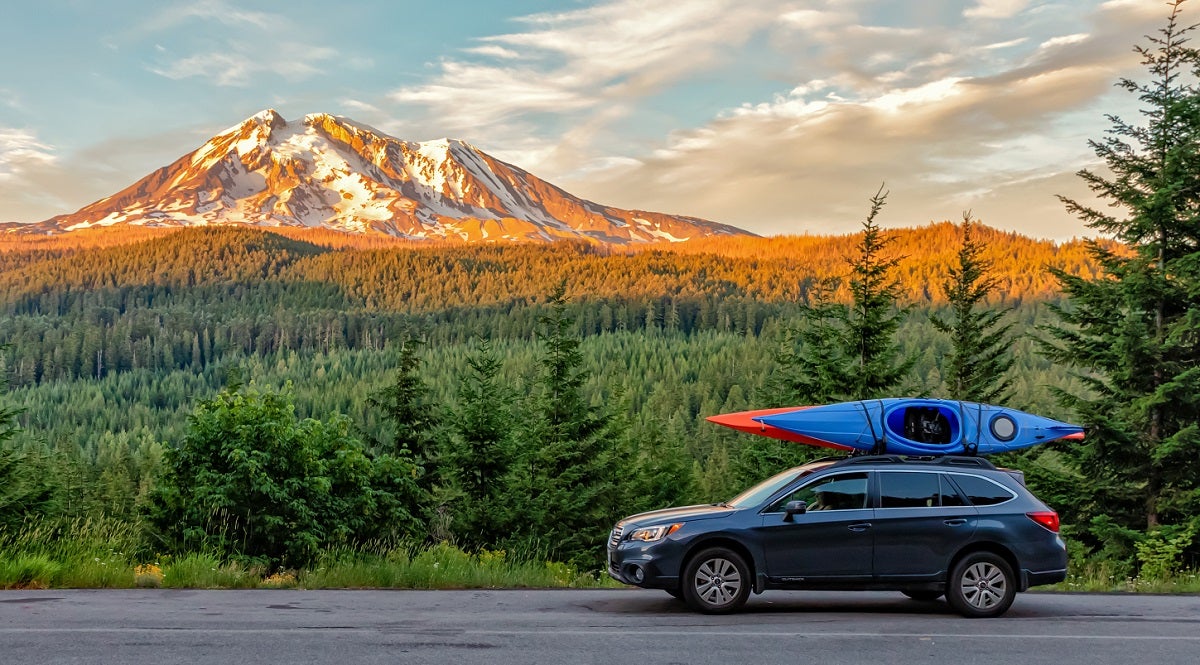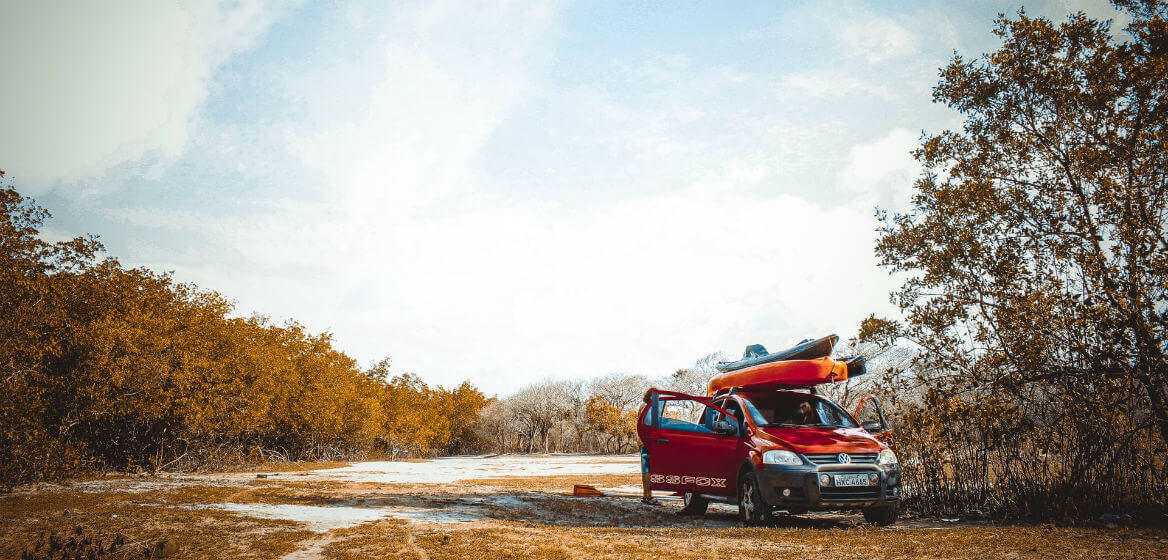
Our Editors independently research, test, and rate what we feel are the best products. We use affiliate links and may receive a small commission on purchases.
You spent a significant sum of money on your kayak or paddleboard, and you want to get it to the lake or shore without any accidents. So what’s the best way to safely transport your gear?
You need to consider your personal well-being as well as your investment. Read on for a checklist of simple questions you should answer before a day of sun and fun on the water.
Basics First — Is Your Vehicle Up to the Task?
The first thing you need to determine is whether your vehicle can manage the workload that hauling your gear entails. You need adequate space, first and foremost.
You can find vehicle roof racks for the tiniest smart cars, including ones that are aerodynamic or made for water sports. But you have to make sure they can support the weight to avoid straining your engine. If a roof rack won’t work for you, such as if you drive for Uber or Lyft, you can consider a trailer as well.
You also need to make sure that you don’t break down, particularly if you must drive a considerable distance to your destination. If you need to abandon your ride — like if you run out of gas and must walk to a station — your gear makes an appealing target for thieves. A breakdown is challenging enough without endangering your hard-earned money.
Which Is the Right Roof Rack System for You?
You can choose from both permanent and temporary foam-block kayak roof rack systems.
Foam blocks keep your kayak or paddle board from scratching or denting your vehicle if you carry your gear on the roof. You place your equipment on top of the blocks and use straps to secure everything through your windows. To make this effective, you need to know your vehicle’s dynamic and static capacity.
The dynamic capacity is most critical, as it refers to the weight your car can safely carry when traveling down the road. This knowledge is vital because even a Rav-4 sports utility vehicle only has a dynamic capacity of approximately 100 pounds. If your kayak weighs more, you risk damaging both your boat and your ride.
Permanent racks cost considerably more than foam blocks, but they are what the name implies. Once you install them, you can’t remove them without substantial bodywork. You have an additional sense of security, too. Unlike foam blocks, you don’t need to worry about the roof rack sliding if you have to slam on your brakes.
Is Your Vehicle Well-Maintained?
One of the most frustrating things that can happen when towing your gear is a vehicle breakdown. Hopefully, you have taken steps to protect your transportation by performing routine maintenance, like oil and filter changes. However, other subtle signs can warn you that your car needs attention.
Is your check engine light on? Common reasons for your check engine light to appear include problems with the exhaust, fuel intake or emissions system. You could have a faulty oxygen sensor, or your spark plugs might need changed.
One typically overlooked reason for this light to come on is a loose gas cap, so check that before calling the shop. A blinking check engine light means severe problems, so have someone tow your car to a mechanic without delay.
Do you have a loss of power? If your vehicle formerly climbed steep grades with ease, but now you find yourself lagging behind semi-trucks, you could have clogged fuel injectors or a filthy air filter.
Do you hear unfamiliar noises? Grinding sounds indicate metal scraping metal, which lubrication can sometimes correct before substantial damage occurs. Knocking often results from improper timing or worn bearings, and tapping noises can indicate premature fuel burning. All of these issues require immediate attention.
Should You Consider a Trailer?
A trailer is another way to transport your kayak, but you first need to calculate the towing capacity of your car before investing. If your dynamic capacity isn’t suitable for your equipment, a small option could be your best bet.
Next, you need to determine whether you want to go with an enclosed or open utility trailer. Open varieties are typically lighter than enclosed alternatives, which may mean they’re your only option if your car can’t pull much weight. However, they do leave your gear exposed to the elements, so you won’t have the opportunity to collapse on your couch after a long day until you unload.
Enclosed trailers offer more convenience, and they also cut the incidents of theft. While technically anyone with sufficient towing capacity could take off with the entire trailer, they would have a more challenging time getting away with it.
Plus, every option has a VIN, unlike a kayak or paddle board, so law enforcement might have a realistic chance of recovery.
Getting From the Car to the Water
Your typical kayak weighs approximately 80 pounds, so unless you’re Superman, you’ll need a way to transport your gear to the water.
You should invest in a dolly or a kayak cart to keep from dropping or scratching your equipment on the way to the waves. The best models have rugged, all-terrain tires that let you travel smoothly from your car to the shoreline.
Drying Your Equipment for the Trip Home
Whether you use a kayak or a paddleboard, one thing you never want to do is let salt water dry on it. The salinity can dry out and eat away at the materials of your gear.
After a day on the beach, make sure you rinse your equipment with fresh water and pat it dry with a soft towel before loading it up to head home. Just like your car, your paddle board or kayak benefits from routine washing and waxing, so don’t neglect it in your garage for months.
Safe Driving Tips for Hauling
Before you hit the road, secure everything tightly. Having your gear blow off on the freeway can obviously damage it. Worse, it could cause a fatal accident if it strikes the car behind you.
Make sure you make your straps tight. Use the three-point tie-down and bundling method to ensure that when you cruise at 60 mph, your equipment stays in place.
Secure the overhang, too. If your kayak or paddle board hangs over the edge of your roof, pop the hood and use temporary hood straps to keep the wind shear from causing lift. Plus, you should mind your turn radius if you’re towing a trailer.
It can be easy to forget that you have a load behind you. A wrong move, like taking a turn too quickly, can cause rollover accidents. Be sure to slow down for safety.
Transport Your Kayak or Paddle Board Safely With These Tips
With these tips, you can readily transport your fishing kayak or yoga paddle board from your home to your favorite retreat. Enjoy a day on the water, and make the journey there more pleasurable too.

